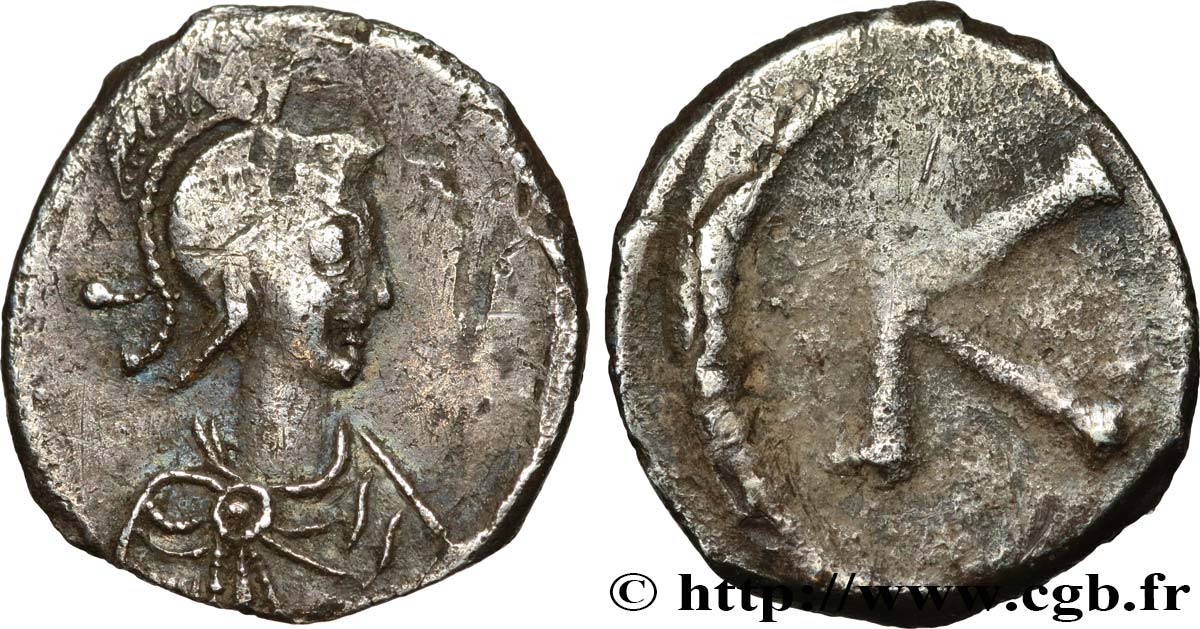Live auction - bby_497568 - CONSTANTINOPOLIS Demi-silique
You must signin and be an approved bidder to bid, LOGIN TO BID. Accounts are subject to approval and the approval process takes place within 48 hours. Do not wait until the day a sale closes to register. Clicking on "BID" constitutes acceptance of the terms of use of cgb.fr private live auctions.
Bids must be placed in whole Euro amounts only. The sale will start closing at the time stated on the item description; any bids received at the site after the closing time will not be executed. Transmission times may vary and bids could be rejected if you wait until the last second. For further information check the Live auction FAQ
All winning bids are subject to a 18% buyer’s fee.
All winning bids are subject to a 18% buyer’s fee.
| Estimate : | 350 € |
| Price : | no bid |
| Maximum bid : | no bid |
| End of the sale : | 31 July 2018 15:40:37 |
Type : Demi-silique
Date: c. 530-580
Mint name / Town : Roma
Metal : silver
Diameter : 12 mm
Orientation dies : 12 h.
Weight : 1,08 g.
Rarity : R2
Coments on the condition:
Exemplaire sur un petit flan ovale bien centré des deux côtés. Beau portrait avec usure sur le casque. Joli revers. Patine de collection
Predigree :
Cet exemplaire provient de la collection André Ronde et de MONNAIES 53, n° 602
Obverse
Obverse legend : ANÉPIGRAPHE.
Obverse description : Buste casqué drapé et cuirassé de Constantinople à droite vu de trois quarts en avant (C).
Reverse
Reverse legend : K.
Reverse description : Lettre dans un grènetis.
Reverse translation : “Konstantinopolis” (Constantinople).
Commentary
Poids lourd. Rubans de type 3 aux extrémités bouletées. Ptéryges fines sous le paludamentum. Fibule d’attache ronde sur le paludamentum. Cet exemplaire est publié récemment dans le BSFN. 6, juin 2011, p. 177-178, fig. 1.








 Report a mistake
Report a mistake Print the page
Print the page Share my selection
Share my selection Ask a question
Ask a question Consign / sell
Consign / sell
 Full data
Full data










